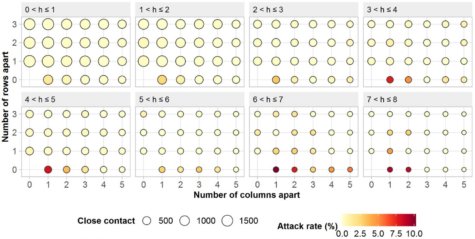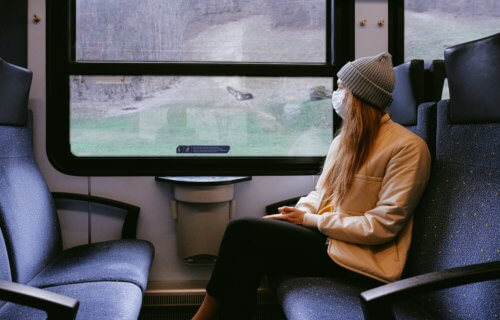SOUTHAMPTON, United Kingdom — In most major cities, taking public transportation is a way of life. During the coronavirus pandemic however, many buses and trains are often empty. So when these communities reopen, how likely are you to get COVID-19 on a busy train? A new study says it’s not just how close you are to an infected passenger, how long you’re on the same train matters too.
Researchers find these factors can shift your risk of infection from zero to more than ten percent.
A team from WorldPop, a group that maps population data for disaster relief and health purposes, studied nearly 75,000 people on board China’s high-speed G train network during the start of the pandemic. More than 2,300 of those passengers were infected with COVID-19 and came into close contact with over 72,000 riders.
The riskiest seat
The data shows someone sitting directly across from a sick passenger is at greatest risk for catching coronavirus. Those riders have a 3.5 percent chance of transmission, compared to 1.5 percent for someone sitting in the same row with the infected person.
These numbers also go up every hour you spend in the same car with infected travelers. On average, the danger rises by 0.15 percent every hour, but that jumps to 1.3 percent if you sit in that adjacent seat.
“Our study shows that although there is an increased risk of COVID-19 transmission on trains, a person’s seat location and travel time in relation to an infectious person can make a big difference as to whether it is passed on,” Dr. Shengjie Lai from the University of Southampton says in a media release.
Surprisingly, the study finds sitting in the same seat previously occupied by a COVID-19 patient carries very little risk. A mere 0.075 percent of train riders in these seats went on to test positive for the virus.
Social distancing key to avoiding COVID-19 on train

The WorldPop report focuses on the three rows of seats (widthwise) and five columns (lengthwise) from a rider with coronavirus. This close contact lasted anywhere from a few minutes to eight hours on longer train rides. Using this seating chart, scientists measured out the virus’s “attack rate” on surrounding commuters.
For that passenger, sitting right across from someone with COVID-19 for six to eight hours, their “attack rate” can balloon to 10.3 percent. Those furthest away from sick passengers consistently have low transmission rates, near zero percent — showing that distance is the best defense against coronavirus.
Overall, the average rate for transmission on board a train is just 0.32 percent. To keep those low numbers, researchers urge transportation officials to keep ridership limited and promote face masks and social distancing.
“The findings suggest that during the COVID-19 epidemic it is important to reduce the density of passengers and promote personal hygiene measures, the use of face coverings and possibly carry-out temperature checks before boarding,” Dr. Lai adds.
Study authors say if you’re spending more than two hours near possibly infected commuters, you need to keep at least eight feet of distance between yourself and others.
The study appears in the journal Clinical Infectious Diseases.
Like studies? Follow us on Facebook!
